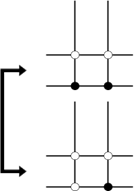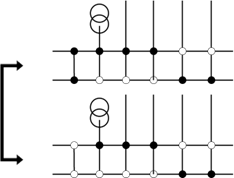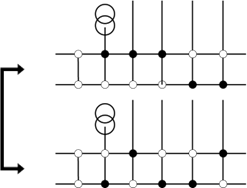19 September 2024
ToOp: Topology Optimization for Congestion management
Our goal is to find topological actions that solve congestion problems and lower the redispatch volume in the grid by using a GPU native approach.
Context
Due the continuously high redispatch costs and the need for more flexibility to operate the grid, the innovation project ToOp with a new approach was launched in 2023. In ToOp we tackle the complex problem around congestion management with a focus on topology optimization.
Effective congestion management is a key factor for running a safe and cost-effective transmission network. Currently, congestion problems are dealt with by operators who use their experience to find remedial actions. Preferably, cheap topological actions are used over costly redispatch actions. However, due to the increase of non-controllable renewable energies, finding robust topological actions becomes more and more challenging for operators. An envisioned solution to operate the future grid in a cost-effective manner is to develop a topology optimizer for congestion management.
Approach
During a first proof of concept phase where proved that we can provide topological actions on smaller test grids, we want to tackle the three most important problems:
- First speed up the current load flow calculations through hardware-acceleration and parallelizing them on high performance computers. This helps to penetrate the search space more efficiently and validate on a fully-sized grid.
- Second, we build an optimizer that is capable of optimizing non-linear non-convex problems, starting with a search algorithm and experimenting with more advanced algorithms. We aim for an end-to-end prototype that takes real grid data and provides results to our colleagues for operational planning/grid operation.
- Third, the optimizer can be used as a basis for a tool that is fully integrated into existing infrastructure and be rolled-out to other use-cases.
The action space we consider during topology optimization consists of three components:
Transmission line switching is the process of removing a line from the grid, hence forcing a reroute of the flows in a benevolent way.

Busbar splitting is the act of opening a busbar coupler to isolate the two busbars. In theory, it is possible to open multiple couplers per substation, however we constrain our optimization to produce at most two electrically independent busbars.

Busbar reassignment is the process of reassigning branches or injections to another busbar before opening the busbar coupler. We assume that for an electric two node operation, all combinations of assignments are possible to represent with the physical busbars in the substation.

Results
During the first phase of the project a GPU-native DC load flow solver was developed jointly together with Tennet Netherlands that currently is the basis for the topology optimization.

Currently, the proposed topologies are exchanged with our operators, feedback is collected and the optimizer is improved.
The goal is to provide acceptable grid topologies to our operators by the end of 2024.
Next steps
To overcome some of the limitations of the GPU-based DC load flow solver a new approach is jointly worked on with Forschungszentrum Jülich.
Also a new Belgian ETF research project OptOmni is started since Q3 2024.



